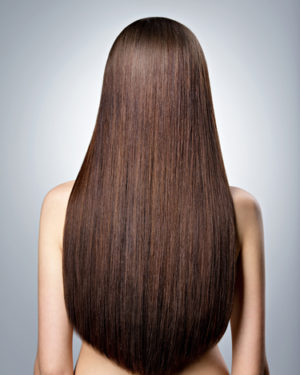
Rebonding vs Keratin Treatments: What’s the Difference?
POSTED ON May 9, 2018
Let’s face it. When it comes to rebonding vs keratin treatments, most of us with frizzy, curly tresses are looking for that perfectly smooth, commercial-worthy hair.
Yet, we often find ourselves stuck between these two popular options. Since hair styling isn’t exactly cheap, you’ll want to make sure you’re getting the best value for your investment.
To help you make an informed decision, we’ve broken down the key differences between rebonding vs keratin treatments in this bite-sized article!
Rebonding
Rebonding is a chemical treatment that changes your hair structure to get a smooth and silky look. You get beautiful hair with a glowy sheen to it.
It’s a fantastic option for voluminous, thick or curly hair that’s hard to manage. During the rebonding process, the natural bonds of your hair cells are broken down and restructured to get perfectly straight hair.
If you opt for rebonding, you can choose between soft rebonding and straight rebonding. Soft rebonding is a gentler method that aims to get a relatively natural look without losing too much volume. Remember that whatever you choose, you need to follow these after-care tips to maintain your hair’s look and health.
Keratin Treatments
Our hair is naturally rich in keratin. This protein forms the outer layer that protects our hair cells and keeps our hair healthy. However, many activities can break and damage this protein, leaving our hair easily breakable and brittle. Heat, chemicals, the climate, and even friction from tying your hair can cause this!
Keratin treatments work to boost the keratin content in our hair strands that are insufficient. They help make damaged hair frizz-free, moisturised, smoother and straighter.
It also adds a natural shine to your hair and helps it regain protein without changing the chemical structure. Styling and managing your hair becomes a whole lot easier. It’s also a choice option for all kinds of chemically-treated hair.
The keratin used in these treatments are sourced from natural origins like animal wool, so it’s as natural as it gets!
The Difference: Rebonding vs Keratin Treatments
When comparing rebonding vs keratin treatments, there are several factors to consider. Here are the 5 key differences that can help you decide which treatment is right for you:
1. Hair Structure Change
- Rebonding: This treatment changes your hair’s structure, permanently straightening it.
- Keratin Treatments: No structural change is made. It simply enhances the keratin protein in your hair, leaving it smoother without altering the natural shape.
2. Duration of Results
- Rebonding: The results last much longer—usually 6-9 months, as it alters the internal structure of your hair.
- Keratin Treatments: The effects typically last 2-3 months, since it only coats your hair without permanent changes.
3. Suitability for Different Hair Types
- Rebonding: Best for those with thick, curly, or frizzy hair looking for a permanent straightening solution.
- Keratin Treatments: Ideal for anyone with damaged, brittle, or chemically treated hair needing moisture and protection.
4. Maintenance and Aftercare
- Rebonding: Requires more strict aftercare, including avoiding washing or tying your hair for a few days.
- Keratin Treatments: Requires minimal aftercare but should be followed up with sulfate-free shampoos to preserve the results.
5. Cost
- Rebonding: More affordable, especially for long-term results, making it a cost-effective solution.
- Keratin Treatments: More expensive, particularly due to the use of high-quality keratin and the advanced technique needed.
Which One is Best for You?
When deciding between rebonding vs keratin treatments, the choice really comes down to your hair goals. If you want permanently straight hair and don’t mind a bit of chemical processing, rebonding could be the way to go. On the other hand, if you want frizz-free, healthy, and manageable hair without changing the natural texture, keratin treatments may be your best bet.
Evaluate your hair type, maintenance preferences, and budget before making a decision. Every treatment has its pros and cons, so consult with your hairstylist to determine which option will help you achieve the beautiful, frizz-free hair you desire!
Related
Articles

7 Powerful Benefits of Pre-Chemical Protection for a Healthier, Happier Scalp!
Pre-Chemical Protection for a Healthier Scalp During Hair Treatments When undergoing chemical hair treatments like coloring, bleaching, or relaxing, your scalp can be exposed to harsh chemicals that may cause irritation, dryness, or allergic reactions. Using a pre-chemical protection product, such as a scalp protector, creates an invisible barrier on your scalp, reducing direct contact […]
READ MORE
6 Best Types of Hair Perm for Different Face Shapes: Find Your Perfect Look
Discover the 6 best types of hair perms for different face shapes! From beach waves to spiral curls, find the perfect perm style to enhance your features and transform your look.
READ MORE
The Science of Hair Growth and Why You Should Care
Achieve healthy hair growth with expert scalp care and treatments at De Arte Hair Salon. Discover the science of hair growth and unlock your hair’s full potential!
READ MORE